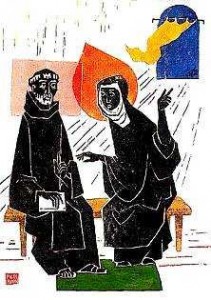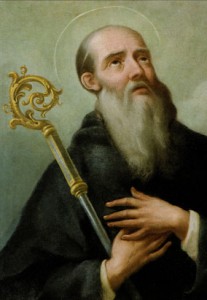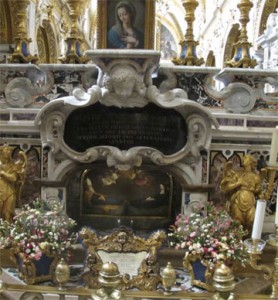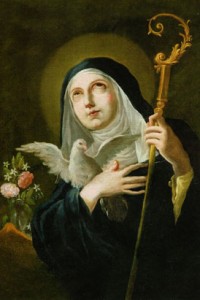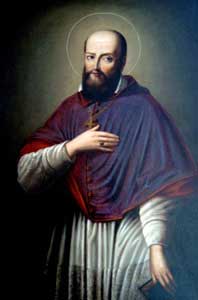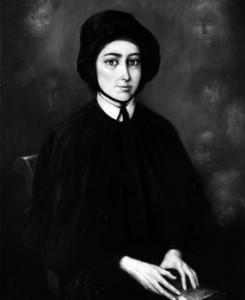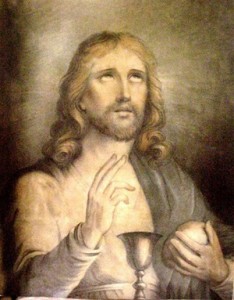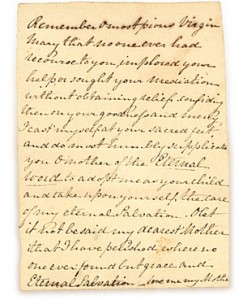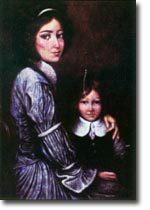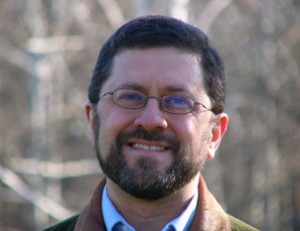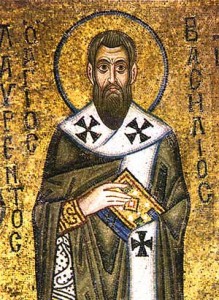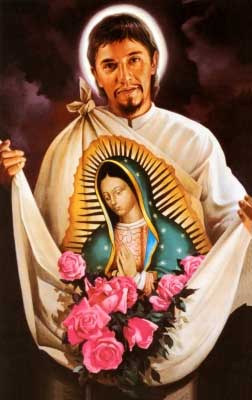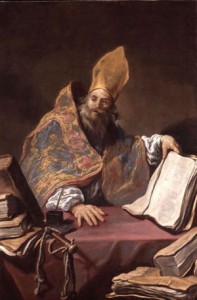From the official Lourdes website (visit it …. it’s fantastic!)
On 11th. February 1858 Bernadette, her sister Toinette and a friend of theirs, Jeanne, went looking for wood on the meadows and led towards “the place where the canal rejoins the River Gave”. They were in front of the Grotto of Massabielle. Toinette and Jeanne crossed the icy water, crying out with the cold; Bernadette hesitated to do this because of her chronic asthma. She heard “a noise like a gust of wind”, but “none of the trees were moving”. “Raising her head, she saw, in a hollow of the rock a small young lady, who looked at her and who smiled at her. This was the first Apparition of the Virgin Mary
More from the official site
On 25th. March 1858, the day of the sixteenth Apparition, Bernadette went to the Grotto, and on the instigation of the Parish Priest, Abbé‚ Peyramale, asked the Lady for her name. Three times Bernadette asked the question. On the fourth request, the Lady responds in dialect “Que soy era Immaculada Conception“. (“I am the Immaculate Conception”). Bernadette does not understand immediately the meaning of these words. The Immaculate Conception is, as the Church teaches, “Mary, conceived without sin, thanks to the merits of the Cross of Christ”. (The definition of the Dogma of the Immaculate Conception 1854) She goes to the Parish Priest to tell him the Lady’s name. He understands that it is the Mother of God who has appeared at the Grotto of Massabielle. Later the Bishop of Tarbes, Monseigneur Laurence, confirms this.
The Immaculate Conception is, as the Church teaches, “Mary, conceived without sin, thanks to the merits of the Cross of Christ”. Thus the Immaculate Conception is also the sign of what all people, recreated by God are called to be.
A prayer to Our Lady of Lourdes by Pope John Paul II
Hail Mary, poor and humble Woman,
Blessed by the Most High!
Virgin of hope, dawn of a new era,
We join in your song of praise,
to celebrate the Lord’s mercy,
to proclaim the coming of the Kingdom
and the full liberation of humanity.
Hail Mary, lowly handmaid of the Lord,
Glorious Mother of Christ!
Faithful Virgin, holy dwelling-place of the Word,
Teach us to persevere in listening to the Word,
and to be docile to the voice of the Spirit,
attentive to his promptings in the depths of our conscience
and to his manifestations in the events of history.
Hail Mary, Woman of sorrows,
Mother of the living!
Virgin spouse beneath the Cross, the new Eve,
Be our guide along the paths of the world.
Teach us to experience and to spread the love of Christ,
to stand with you before the innumerable crosses
on which your Son is still crucified.
Hail Mary, woman of faith,
First of the disciples!
Virgin Mother of the Church, help us always
to account for the hope that is in us,
with trust in human goodness and the Father’s love.
Teach us to build up the world beginning from within:
in the depths of silence and prayer,
in the joy of fraternal love,
in the unique fruitfulness of the Cross.
Holy Mary, Mother of believers,
Our Lady of Lourdes,
pray for us.
Amen.

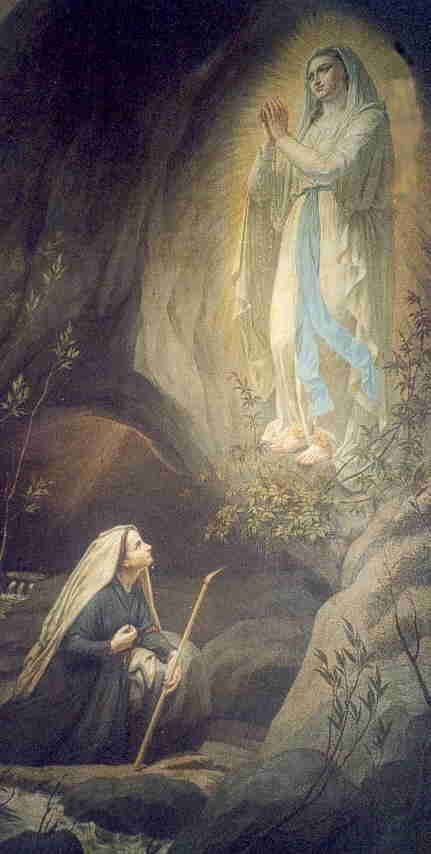
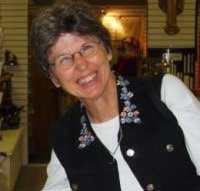
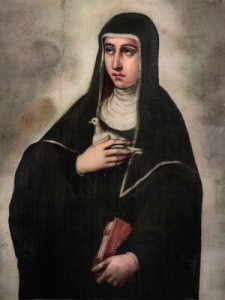 to be delivered from the thorn of the flesh, and yet he did not obtain his petition. Speaking of that, I must tell you how there was one thing which the venerable father Benedict would have liked to do, but he could not.
to be delivered from the thorn of the flesh, and yet he did not obtain his petition. Speaking of that, I must tell you how there was one thing which the venerable father Benedict would have liked to do, but he could not.